Curious about horses and want to know more about them? You’re at the right spot! We compiled a list of frequently asked questions about hooved pals you may find interesting. Let’s dip into the nitty-gritty of the equine world.
Do Horses Have Nipples?
Yes, a horse has two nipples. This is accurate to female horses that are called mares. Male horses, stallions, do not have nipples.
In fact, horses are hooved mammals that produce milk to feed their foals. Mares have mammary glands that produce milk. Female equines have two pairs of mammary glands with two small teats. They are situated between the hind limbs.
Actually, the mare’s glands have a unique structure among other mammals. There is usually one teat on each gland but it doesn’t work for equines. Speaking of female horses, each pair of their glands come together in the midline with a single teat. That’s why a mare has two teats in total.
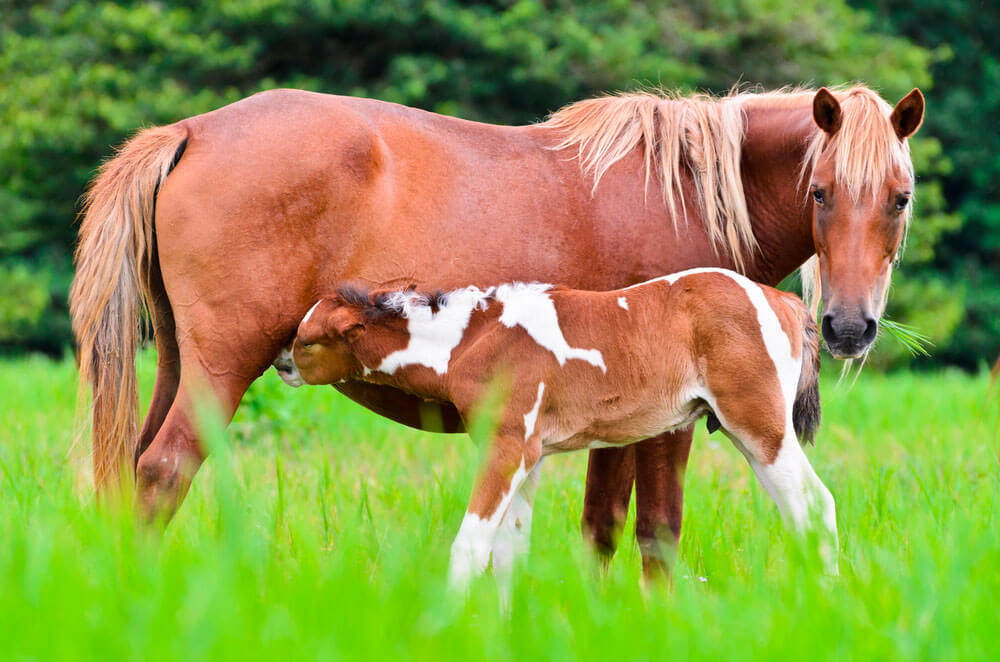
In comparison, a cow has four large teats. Thus, the milking process of these two species is quite different. Each teat has two holes where milk comes through. And you may expect the milk comes out from the holes in different directions. That’s why milking can be a bit messy, you need a professional to do it properly.
The amount of milk produced by a mare depends on the frequency of feeding its foal. In case the foal is feeling sick and doesn’t suckle for long, the mare’s glands are shutting down. This means you should regularly watch the foal’s state of health and its milk consumption. As they may end up getting not enough feeding.
In case you need to get the foal from the mare for a while, you should maintain the equine’s milk production. You can do that by milking the mare by hand. Soon after, when the foal is growing up and stops suckling, the mare’s glands are shutting down.

Do Spurs Hurt Horses?
Spurs don’t usually hurt horses. If you use the spurs properly and the gear’s design is equine-friendly, everything will be fine. The horse will feel a little pressure when you poke it with the spurs, but not the pain. There are no sharp edges on the spurs, so you can flawlessly use them when riding. Be careful with your hooved companion to keep him comfy and safe.
The Spur Design
Equestrian brands produce a wide range of spur designs to put over the riding boots. Thus, you’re able to find the gear that will fit you and your horse.
As you can see in the photo below, the spur design can be quite different. Check these various forms at the tips that are called rowels. They can have round, swan neck, or star shapes. Some of them are also rotatable. The common designs are round tips that are safe for horses.
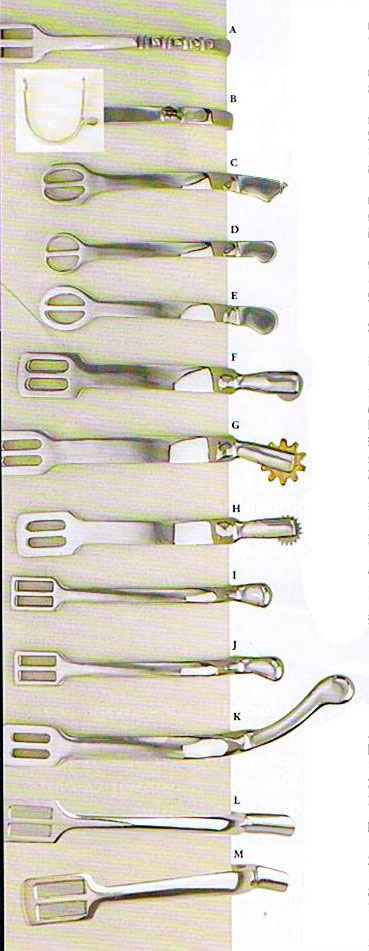
In terms of safety, there’s no big difference if the rowel can spin or not. You should look for wide tips that help to spread over the pressure. As the pointed tip can harm your hooved friend. Besides, the spurs shouldn’t be too long. The average length of the gear is about 1.5 inches.
Using horse spurs with sharp discs and points is not recommended. As these pointy edges may harm an equine while riding. If you’re going to take part in a horse show, you should find out what types of spurs are allowed there. If you need help to choose the horse spurs, ask your vet or another equine expert to pick the proper gear.
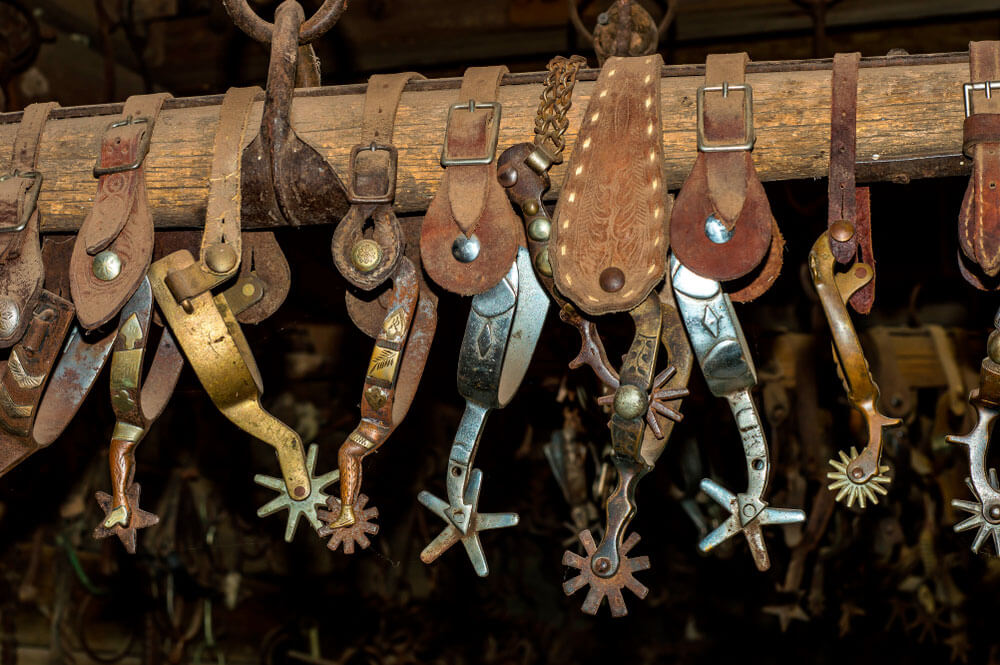
Should I Use Horse Spurs?
Beginner riders are not recommended to put on spurs. That’s because a rookie equestrian has to understand how to handle a horse on their own. With gaining riding experience, you may consider purchasing horse spurs. That might ease controlling the hooved companion.
On the contrary, some horse trainers do recommend wearing spurs because of the same reason. They could help novice riders to master their skills. Thus, it’s up to you whether to use the spurs or not.
If you decided to put on the spurs, you should learn how to use them aptly. You have to control your moves all the time to be gentle to your horse. Avoid accidental poking the equine as they won’t understand what you want from them. And rapid poking may lead to the horse turning or speeding up.
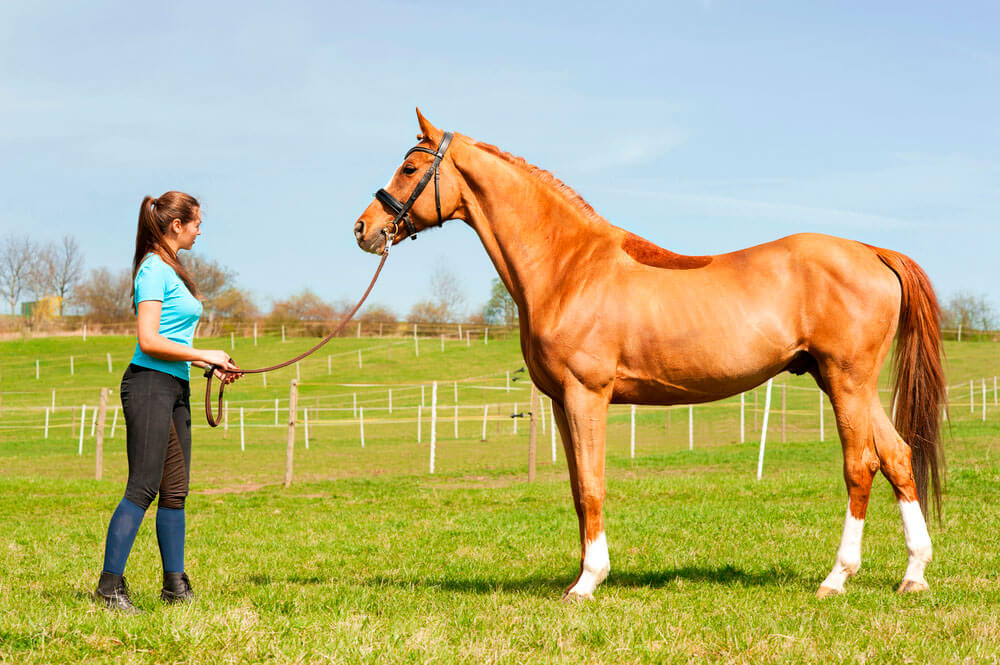
How to Teach a Horse to Lunge?
Lunging a horse is when the animal moves in a circle around a man. They hold the lunge that is attached to the horse on the other side. It’s the basis of equestrian sports as well as an excellent exercise. The method is used to train green horses and to learn how to ride. After you nail lunging a horse, you can move on to learn more advanced movements.
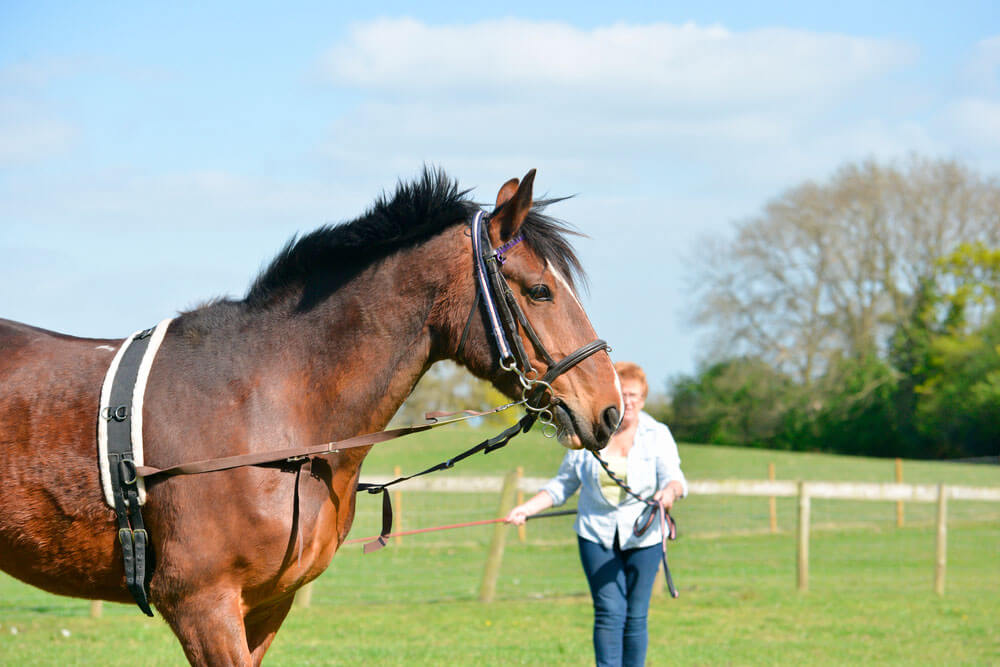
Why Lunge a Horse?
Lunging a horse has plenty of benefits that are worth consideration:
- It’s a great way to exercise your horse.
- The method improves the horse’s stamina to get ready to carry a rider on its back.
- It’s advantageous for balance and rhythm development.
- Lunging is a basis for such moves as trot and canter.
- It’s a good way to bond with a horse before hopping on the saddle.
- This method can also help detect horse lameness.
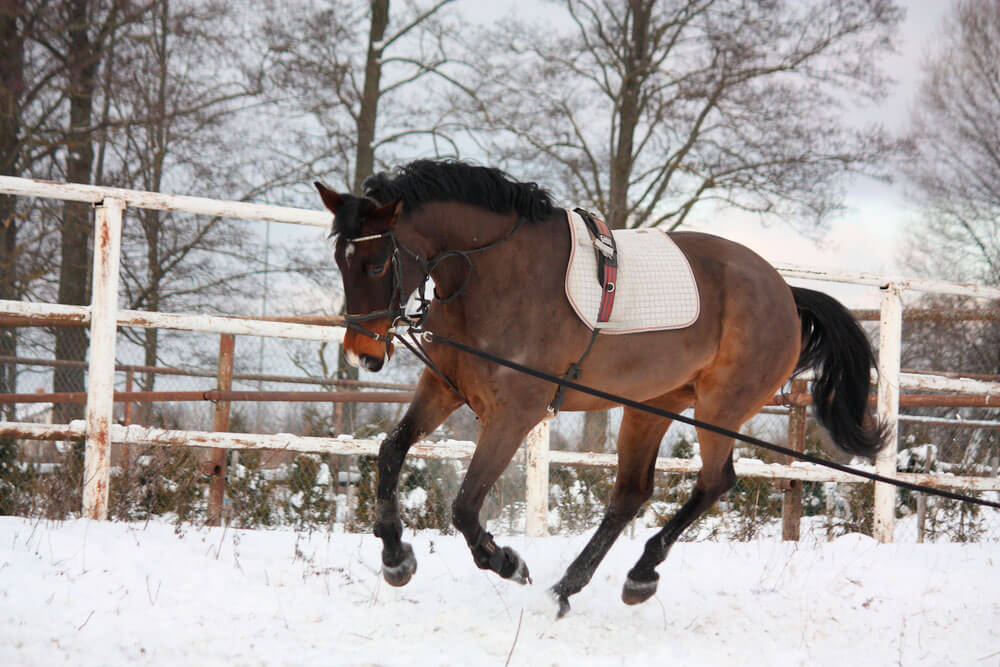
Preparation for Lunging
You need special equipment to lunge a horse. Here’s a checklist to make sure you have everything to proceed.
What Your Horse Needs
- A lunge cavesson or headcollar.
- A lunge line that is 30 – 35 feet long. The lunge line is better than a rope as it’s lighter and easier to maintain.
- A lunge whip.
- Exercise boots or protective wraps.
What You Need
- A sturdy riding helmet to protect your head.
- A pair of gloves to keep your hands safe while holding the lunge line.
- Comfy boots that are non-slip.
How to Lunge a Horse
Here’s a comprehensive guideline on lunging a horse. Practice this exercise for 30 mins a few times a week. Stay calm and patient and you’ll see the results over time.
- Bring your horse to the ring where you want to practice on.
- Gently attach the lunge line to the cavesson (or headcollar).
- Hold the line in one hand and the lunge whip in another hand. If you’re going to work with the left rein, place the line in the left hand and the whip in the right. And if you’re working with the right rein, do the opposite. Place the line in the right hand and the whip in the left.
- Your position plays a significant role here. Your arms are bent at your elbows. Hold the line and the whip so they create a triangle, where the horse’s side is the base. Your hands are posed apart looking at the head and the hocks of the animal.
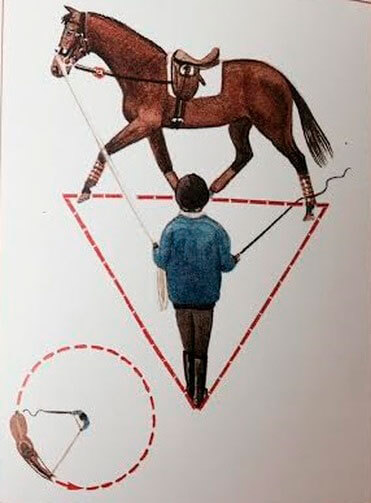
- Make your horse walk around you by leading it with the line. Start with a small circle first. When your horse gets what you want, you may widen the circle with a long line.
- Use voice commands like “walk”, “whoa”, and “stand”. The last two commands are the sign for the horse to stop. With more experience, you will add advanced signals like “trot” and “canter”. It’s recommended to use the same tone for the command. And try to use different paces for various commands. That will help your companion to determine your signs easily.
- Keep the triangle shape with the horse. Watch your arms bent at your elbows. If they’re getting higher, the line is not tight enough, and the horse is off the circle. When lunging, keep moving a bit, don’t spin at one spot. As you may end up feeling dizzy.
- When halting the equine, it should stay still and wait for your approach. If you want your horse to come to you instead, watch the lunge line. Keep it up so it doesn’t lay down on the ground to avoid stumbling over it.

How Long Can a Horse Lay Down?
A horse can lay down for two to three hours a day. This period is divided into shorter sessions up to ten to twenty minutes at a time.
So if you see a horse laying down, everything is fine. The animal is probably having a nap. In fact, horses are polyphasic sleepers. This means they have several sleeping sessions for 24 hours. Horses need two to three hours of REM sleep in total.
Humans are generally up in the daytime and sleep for seven to eight hours in a row. Equines have a quite different sleeping routine. They have short naps up to 30 minutes each when they lay down. Besides, horses also sleep while standing. That’s because of the natural instincts that they should be alert all the time in nature. But the solid REM sleep can be achieved only by laying down.
Due to the equine anatomy, the animal should balance between standing and lying. Horses can’t lay down for long as it affects their well-being. Prolonged laying restricts the blood flow to get to the organs.
That’s why you should watch your companion lay down for a normal period of time. If you feel the animal lays down too long, that could be a sign of the horse struggling. The horse may be sick or hurt. Contact your vet immediately to get a helping hand.

Do Horses Have Belly Buttons?
Yes, horses have a belly button. As they are mammals, all of their representatives do have a navel. Both male and female equines have a belly button. It’s placed three to four inches from the genitals. Some horses have a quite obvious navel. While others have a hidden one.
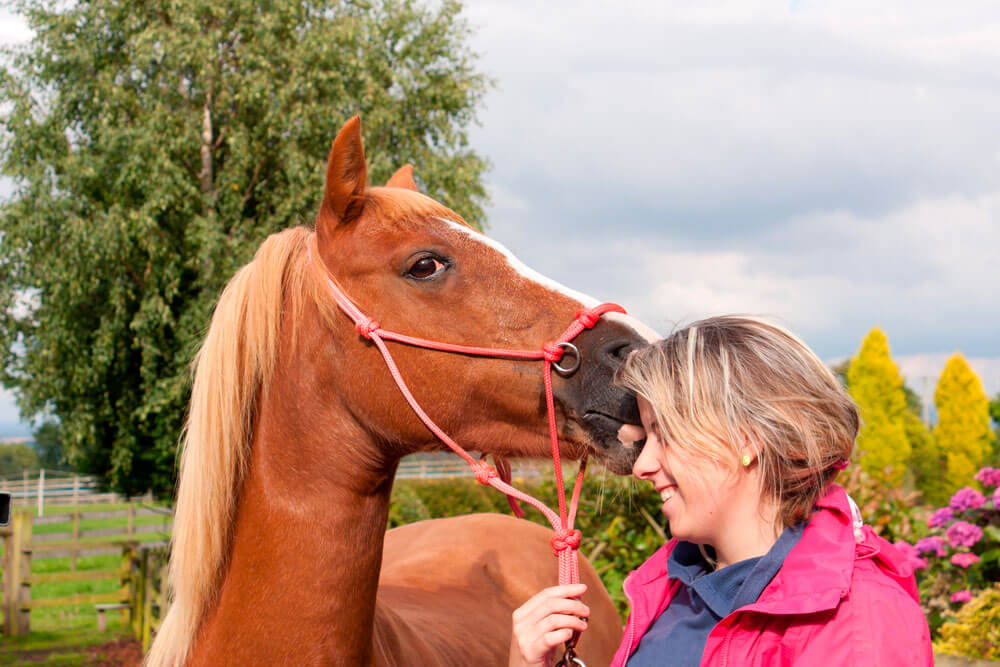
What Does It Mean When a Horse Nudges You with His Nose?
When a horse nudges you with his nose, he probably wants a treat. If you feed the horse with your hand, he remembers that you can have a yummy for him. So he nudges to ask you to treat him again. Feed your companion with an open palm so the horse doesn’t accidentally bite you.
Another reason for nudging is that a horse wants your attention. When you have a strong bond with your hooved pal, the animal wants to play with you. But be careful, don’t let the horse get too excited to avoid rapid moves.
Alternatively, a horse may need your helping hand to scratch him. If the animal is feeling itchy, it can ask you to stroke him for a while. But again, it’s not a great idea to use you as a scratching post.

Why Do Horses Snort?
Horses snort to show happiness or as a way of communication. Besides, they can snort to clear the nasal passages. Thus, it’s believed a horse snorts for a variety of reasons.
Some researches show that there’s a correlation between horse snort and happiness. The animals do snort more when they’re relaxed or excited. For instance, when the equine is getting fed, it tends to snort more frequently. Everybody knows how happy horses are when they are treated with their fave yummies!
Snorting is also interpreted as a way of communication with other horses. It could be a sign to warn the peers the danger is coming. The animal would stay still with alert ears and his head up. Besides, a horse may snort when communicating with a new hooved pal. When the horse is in the new environment, something seems unusual to him, he may show such behavior.
Other suggestions are related to equine anatomy. When it’s too dusty, and some dirt gets into the horse’s nose, the animal may start snorting. This is done to clear the nostrils, just like humans do. The same goes for insects hitting the equine’s face. The animal may start snorting to get rid of annoying bugs.
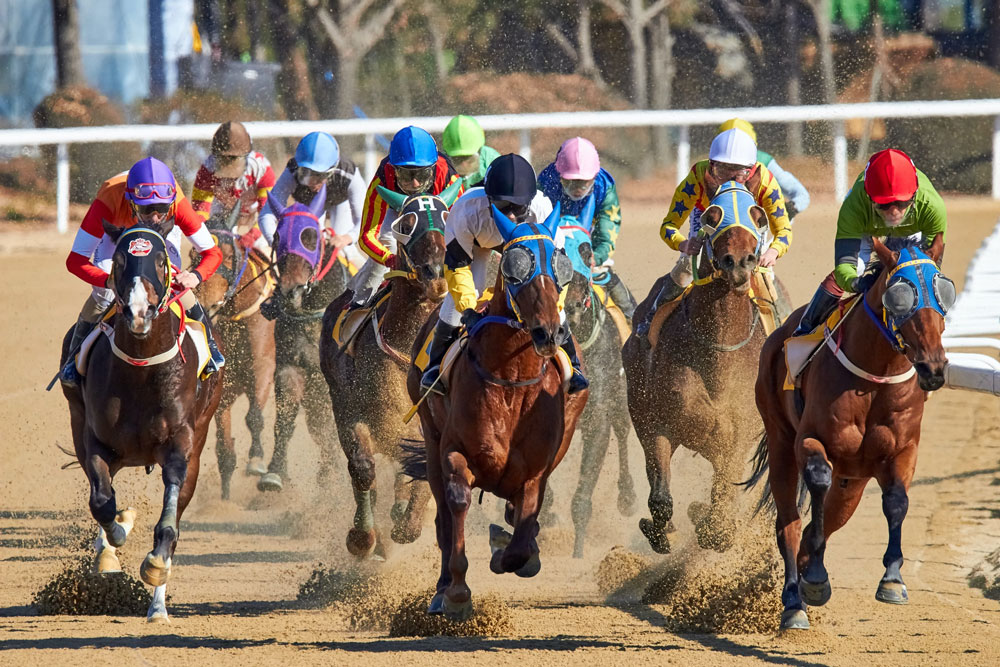
How Fast Is a Horse?
The average horse speed is 30 mph. This characteristic depends on a wide range of factors. Horses are speedy animals and horse races have been taking place for centuries. Equines can perform in different moves. These are called gaits. There are five main gaits including walking, cantering, trotting, galloping, and backing.
How Fast Can a Horse Run?
The top speed that has ever been clocked is 55 mph. That was a Quarter Horse, one of the fastest horse breeds. The fastest speed that was recorded in The Guinness Book of Records was 44 mph. The record was accomplished by a Thoroughbred – another speedy racehorse.
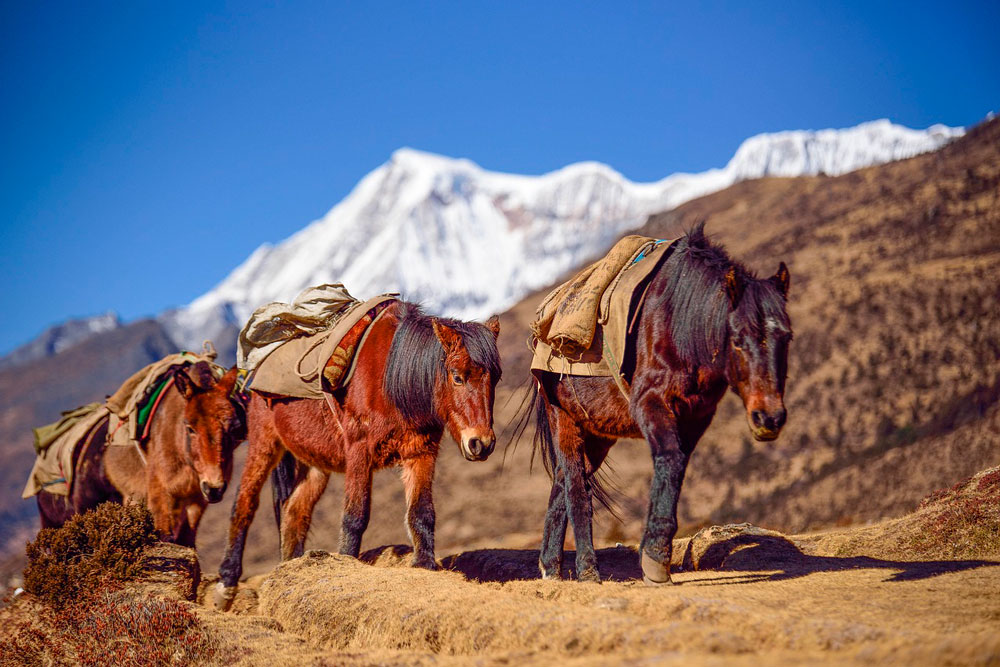
How Far Can a Horse Travel in a Day?
An average horse can travel from 25 to 35 miles a day. This distance can be achieved if the equine goes slowly and has brakes. That means you can travel with your horse on long-distance trips. But your companion needs proper feeding, watering, sleeping, and sheltering. The same goes for the rider.
If you want to take a trip on your horse, consider a healthy and young animal. As hacking is challenging for horses. Take care of your equine all way long to avoid health issues in the future. Check if your companion feels good and shoed with solid horseshoes.
What Is a Baby Horse Called?
A baby horse is called a foal. It’s an equine aged from 0 to 12 months old. A male foal is called a colt and a female foal is called a filly. These names are used till the age of three or four.
Foals are born after 11 months of a gestation period (pregnancy). The labor lasts relatively quickly, mostly at night. Foals are precocial animals. That means they are born already being able to make primitive actions. Foals can stand up and herd after a few hours after delivery.

What Do You Call a Female Horse?
An adult female horse is called a mare. It’s a female equine at the age of four and above. A female foal aged 1 to 4 is called a filly. When the horse reaches the breeding age, it’s also called a broodmare. A dam is a female parent.
What Do You Call a Male Horse?
An adult male is called a stallion. It’s a male equine at the age of four and above. A male foal aged 1 to 4 is called a colt. When the horse reaches the breeding age, it’s also called a stud. A sire is a female parent.
You may also hear the name gelding. It’s the name of a castrated horse. The term is also used for donkeys, ponies, and mules. Such animals don’t have the ability to reproduce.
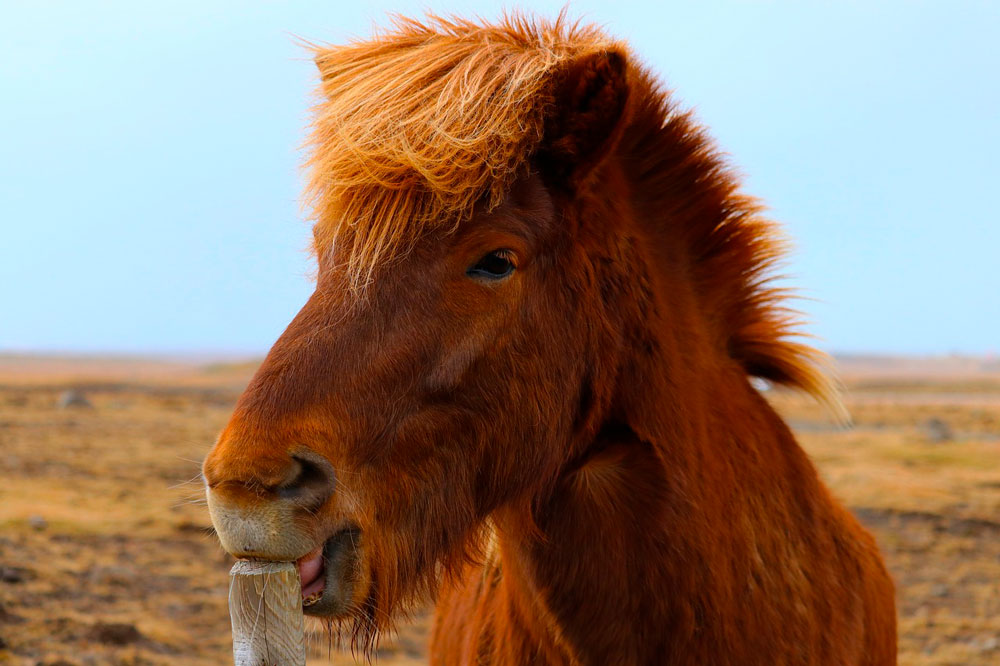
How Long Can a Horse Go Without Water?
A dehydrated horse can live for 3 to 6 days. The daily amount of water needed is different for every horse. Just like humans, horses need to drink water regularly. In case the animal has no water supply, it can refuse to eat food over 2 days. This may end up with colics and other severe heath issues.
An average horse needs 5 to 10 gallons of water a day. Provide your horse with fresh and clean water. You may consider installing an automatic waterer so the horse will get 24/7 access to water.
Horses constantly graze grass and hay. Drinking water could help the animal to digest the forage better. Fresh grass on the pastures provides some water when grazing. This provides some amount of water intake, which is a plus. Make sure your horse has access to cool water in summer. It prevents overheating and helps with body temperature regulation.
How Long Can a Horse Go Without Food?
A horse can live without food for 20 to 25 days. That’s only if the animal gets enough water supply. Otherwise, this period is shortened impressively – up to 10 days. Anyway, the equine will be weak and sick. Urgent help and long-term recovery are needed to treat the animal.
Horses graze most time of the day. A horse eats 1.5 to 2% of its bodyweight daily. Thus, an average 1000-pound equine needs 15 to 20 pounds of daily feed. Forage like hay takes the most part of the horse’s diet. It’s better to provide a horse with constant access to feed. As the animal eats slowly and in little portions.

How Much Does It Cost to Feed a Horse?
Keeping a horse is pricey. You may need around $60 to $100 monthly to feed your horse. The equine needs hay, salt, and food supplements. You can also consider grass and grain. Don’t forget to treat your horse with a small number of fruits and vegetables.
Equine’s diet is individual to every horse. Contact your vet to make a nutrition plan according to the horse’s needs. Feeding a horse requires taking into account lots of aspects. These are the horse’s age, weight, breed, health condition, workload, season, climate, etc. Thus, the cost of feeding a horse can be different.
A horse needs to consume forage that makes up 1.5-2.5% of its body weight. For instance, a 1,200-lb equine needs 18-30 pounds of food per day. The biggest part of horse feeding is hay. You’re likely to spend $45 monthly on hay. The price may go up if considering high-quality forage.
Speaking of feed that provides nutrients not available in the hay, about 3 pounds of the feed are needed per day. That’s around $35 per month. Besides, there are food supplements, like vitamins and salt blocks, that should be added to the diet. They are worth $20 per month. To sum up, you’ll get an average check for $100 for horse food.
How to Measure Horse Height?
An equine’s height is usually measured in hands (hh). One “hand” is equal to 4 inches. A 15.2hh height means 15 hands and 2 inches. To measure a horse, start from the ground to the highest point of the horse’s withers. You can use a measuring tape or a string. There’s also a horse and pony height tape that is specially designed for equines.
Measuring the equine’s height is needed if you want to know if the animal is still growing up. Plus, depending on the height, an equine can be determined as a horse or pony. If the animal is lower than 14.2hh, it’s a pony. If higher – it’s a horse.
Before measuring your horse, make sure it stands flat on the ground. The hooves are lined up creating a square with four legs. This ensures the animal is standing straight. Perhaps, you’ll need a helping hand to take the measurements.
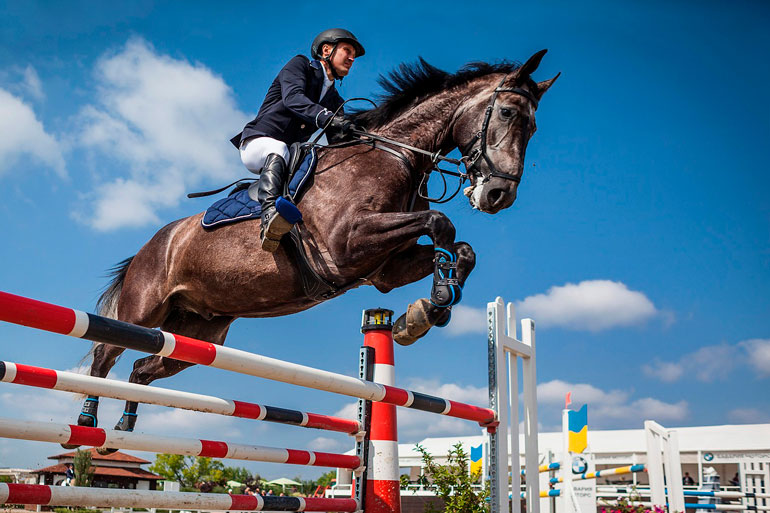
How High Can a Horse Jump?
An average horse can jump as high as 2.6 – 3 feet. Horses are powerful creatures that can jump impressively high. With no training, an equine jumps for few reasons. Perhaps, the animal was spooked. Or it needs to jump over to reach another side of the land.
The average jump is 3 feet but horses can jump even higher. Some horse shows require a horse to constantly jump over obstacles. That’s why horsemen improve such a skill in horses. According to the Guinness World Records, the highest jump recorded is 8 feet 1.25 inches high. It was made by the horse called Huaso ex-Faithful in Chile in 1949.
How Much Weight Can a Horse Pull?
Horses are sporty animals that can pull 1/10 of their own weight. That’s about pulling dead weight like logs and plows. Speaking of pulling a cart or any vehicle with wheels, a horse can pull 6 times its weight for short distances. And 1.5 times its body weight for a long distance.
Of course, there are many factors that affect the numbers. Like the type of load, the type of road they travel (flat trails or bumpy hills), and weather conditions. Young and sporty equines are likely to withstand long distances more. Some horse breeds are willing to work that may come in handy.

What Are Withers on a Horse?
The withers is the line between the horse’s shoulder blades. It’s the highest point on the shoulders. It’s the tallest point from which the horse’s height is measured.
Horses have various types of withers (high and low). Depending on the withers, horse riders need different saddles. High-withered saddles are suitable for horses with bumpy shoulders. While low-withered saddles are good for equines with less bulky withers.
How Far Can You Travel by Horse in a Day?
You can travel from 25 to 35 miles by horse in a day. The range is approximate as it depends on a variety of factors. First, mind the pace. An average horse can walk for 8 hours straight. That’s about 32 miles traversed by that time. Considering the horse’s gait, its speed is different:
- walk – 4 mph;
- trot – 8-12 mph;
- canter – 12-15 mph;
- gallop – 25-30 mph.
Obviously, the faster the speed is, the shorter distance the horse will overcome.
Another important aspect to consider is the type of terrain you want to travel on. Going up and down the hills is challenging for the horse. The equine’s muscles are activated immensely. As well as the heart rate is raised. The same goes for bumpy and rocky roads. The horse can’t go fast in such conditions. Besides, you have to be careful to avoid tripping over obstacles.
Therefore, overall horse health is important when traveling with your companion. Young and healthy equines tend to withstand the workload more. While older horses prone to have issues with joints and hooves. That’s why make sure your horse is ready to travel for long distances before taking off. Grab a first aid kit for horses in case urgent help needed.
Weather conditions are also essential when planning your trip. When horses work hard, they start sweating. Lots of water and electrolytes are gone through the sweat. Water your horse regularly to avoid dehydration. As this may lead to severe problems in the future. And generally, water intake helps to control the body temperature and makes feel refreshed. So your horse can keep going with no discomfort feelings. Make some breaks to feed and water your companion throughout your trip.
